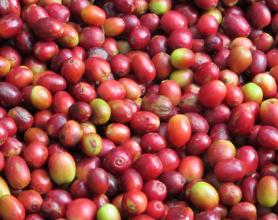How long can coffee beans and coffee powder be preserved-introduction to storage methods
How long can coffee beans and coffee powder be preserved-introduction to storage methods
1. Gas-containing packaging.
In the most common packaging, beans and powder are packed in glass cans, paper bags or plastic containers, and then capped or sealed. Low preservation, and because of contact with air all the time, need to drink as soon as possible, drinking period is about a week.
2. Vacuum packing.
The packing container (can, aluminum foil bag, plastic bag) draws out the air from the container after filling the coffee. Although it is called a vacuum, it actually removes up to 90% of the air and is not suitable for preserving coffee powder.
3. Gas filling packaging.
A pinhole is designed on the metal bag. After filling the coffee, inactive nitrogen is poured into the bag and the carbon dioxide in the bag is squeezed out of the pinhole. This method is more popular, but after all the gas is discharged, part of the air will be drilled back into the human bag from the pinhole.
4. Packing of gas absorbent.
When the absorbent made from deoxidizer and decarbonization is put into the bag, the air in the package can be easily absorbed, and the carbonation produced by the coffee can also be absorbed, but its disadvantage is that the aroma of the coffee will also be absorbed.
5. UCC Euro packing.
This is the most ideal outer packaging of coffee at present, all in the form of beans rather than powder. It is similar to the pinhole metal bag, except that the gas in the bag can be discharged through the pinhole, while the unidirectional piston can prevent the air from entering the bag. Immediately after the beans are roasted, the coffee manufacturers cool and pack the beans and pour nitrogen into the bag to discharge the gas from the bag. Although this kind of packaging is the most ideal, but the material is expensive and the cost is high. At present, only selected coffee from large companies will use this packaging method.
It really depends on the degree to which a person is required to drink coffee. Based on the difference in people's sensitivity to smell and taste, how many people can tell the difference between one and the other, or the difference between a month and a month? Therefore, as long as you know how to preserve coffee beans, one month is generally acceptable.
The shelf life of coffee powder is very short. After grinding into powder, due to the increase of surface weight and the acceleration of oxidation, a large amount of aroma and flavor will be lost. Therefore, unless you have to, for example, in the public office, when you can't grind the beans, it's best to buy fresh coffee beans and grind them before drinking them. In 1999, the American Fine Coffee Association (SCAA) defined "freshly baked coffee" as "freshly baked coffee": no matter how it is packed, it must be soaked within three to seven days after baking, and it must be soaked immediately after grinding. The conclusion made by Don Holly, the president of SCAA, is that this is not what coffee and bean producers like, because their distribution systems usually fail to deliver beans to consumers within a week.

Important Notice :
前街咖啡 FrontStreet Coffee has moved to new addredd:
FrontStreet Coffee Address: 315,Donghua East Road,GuangZhou
Tel:020 38364473
- Prev

Can coffee beans be used beyond the warranty period-how long is the shelf life?
Whether coffee beans can be used beyond the shelf life-how long the shelf life of coffee beans how to preserve roasted coffee beans, it is easy to be oxidized by oxygen in the air, so that the oil quality is deteriorated and the aroma is volatilized and disappeared. and then accelerate the deterioration through temperature, humidity, sunlight and so on. So, how to preserve the coffee beans? The preservation requirements of coffee beans are airtight, low temperature and avoiding light.
- Next

How do coffee beans grow?-introduction to why coffee beans are roasted.
How coffee beans grow-why coffee beans are roasted introduce the origin of Robasta coffee trees in Madagascar in central, western and eastern Africa, and Indonesia in Asia, accounting for about 20% and 30% of the world's production. Robasta coffee tree is suitable for planting in the lowlands below 500 meters above sea level. It has strong adaptability to the environment and can resist the harsh climate.
Related
- Guji coffee producing area of Guji, Ethiopia: Humbela, Shakiso, Wulaga
- What is the most expensive variety of Qiloso in BOP multi-variety group?
- How to store the coffee beans bought home?
- Why are Yemeni coffee beans so rare now?
- Ethiopian Sidamo all Red Fruit Sun Sun Santa Vini Coffee beans
- SOE is mostly sour? What does it mean? Is it a single bean? what's the difference between it and Italian blending?
- Is Italian coffee beans suitable for making hand-brewed coffee?
- How to choose coffee beans when making cold coffee? What kind of coffee beans are suitable for making cold coffee?
- Just entered the pit to make coffee, what kind of coffee beans should be chosen?
- Can only Japan buy real Blue Mountain Coffee? What are authentic Jamaican Blue Mountain coffee beans?

